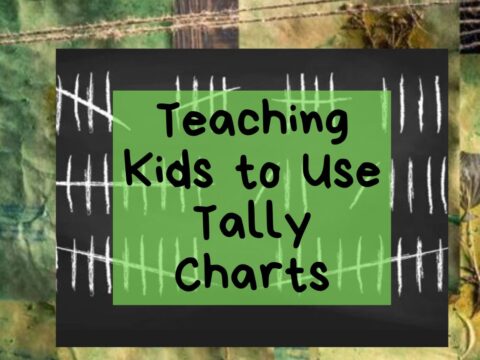 Of all the skills students learn in school, problem solving arguably is the most valuable and the hardest to learn. It’s fraught with uncertainty–what if the student looks stupid as he tries? What if everyone’s watching and he can’t do it–isn’t it better not to try? What if it works, but not the way Everyone wants it to? When you’re a student, it’s understandable when they decide to let someone tell them what to do.
Of all the skills students learn in school, problem solving arguably is the most valuable and the hardest to learn. It’s fraught with uncertainty–what if the student looks stupid as he tries? What if everyone’s watching and he can’t do it–isn’t it better not to try? What if it works, but not the way Everyone wants it to? When you’re a student, it’s understandable when they decide to let someone tell them what to do.
But this isn’t the type of learner we want to build. We want risk-takers, those willing to be the load-bearing pillar of the class. And truthfully, by a certain age , kids want to make up their own mind. Our job as teachers is to provide the skills necessary for them to make wise, effective decisions.
It’s not a stand-alone subject. It starts with a habit of inquiry in all classes–math, LA, history, science, any of them. I constantly ask students questions, get them to think and evaluate, provide evidence that supports process as well as product. Whether they’re writing, reading, or creating an art project, I want them thinking what they’re doing and why.
Common Core puts problem solving front and center. It comes up in ELA (“Students will be challenged and asked questions that push them to refer back to what they’ve read. This stresses critical-thinking, problem-solving, and analytical skills that are required for success in college, career, and life.”), but is inescapable in Math. In fact, students cannot fully meet the Math Standards without understanding how to effectively approach the unknown. Consider the Standards for Mathematical Practice that overlay all grade levels K-12:
- Make sense of problems and persevere in solving them
- Reason abstractly and quantitatively
- Construct viable arguments and critique the reasoning of others
- Model
- Use appropriate tools strategically
- Attend to precision
- Look for and make use of structure
- Look for and express regularity in repeated reasoning
Don’t these sound like great strategies for everything, not just math? How about deciding what classes to take in Middle School? Or whether to make a soccer or basketball game on the weekend? Or which college to attend? Using these eight tools strategically, with precision, and tenaciously is a great first step.
The question becomes: How do students learn to use them? Certainly, as they accomplish their grade-level math curriculum, you as teacher remind them they aren’t doing a multiplication problem (or an Algebra one); rather they’re reasoning abstractly or using appropriate tools strategically, or expressing regularity in repeated reasoning. but for deep learning, hands-on authentic experience is required. Let’s say, for example, the class is investigating the purchase of an MP3 player. Should they purchase an IPod, a smartphone, a dedicated use MP3 player, or a different option? How do students arrive at a decision–solve that problem? Ask students to work through the steps below as they address a decision. Ask them to note where they accomplish one or more of the Standards for Mathematical Practice above:
- What do you want in an MP3 player? Should it play music, show videos, pictures, communicate with others, be a phone also? Make that list so you know how to evaluate information as you collect it (compare/contrast).

- What do you know about the topic (evidence)? Have you seen some you liked or didn’t like. What have you heard about those on your list. You are a good resource to yourself. Don’t discount that. You’ll be surprised how much you know on a variety of topics. This step is important to college and career. Future employers and schools want you to think, to use your intelligence and your knowledge to evaluate and solve problems.
- What advice do knowledgeable friends have (perspective taking, collaboration)? You want the input of MP3 users. Your friends will think whatever they own is the best, because they’re vested in that choice, but listen to their evidence and the conclusions they draw based on that. This is important to a team-oriented environment. Listen to all sides, even if you don’t agree.
- Dig deeper (close reading). Check other resources (uncover knowledge). This includes:
- people who don’t like the product
- online sources. Yep, you might as well get used to online research if you aren’t yet. Statistics show more people get their news from blogs than traditional media (newspapers, TV) and you know where blogs are.
- your parents who will bring up topics friends didn’t, like cost, longevity, reliability.
- Evaluate your resources (integration of knowledge). How much money do you have? Eliminate the choices that don’t fit your constraints (money, time, use, etc.) If there are several choices that seem to work, this will help you make the decision. You might have to save money or get a job so you can afford the one you’ve chosen. Or, you might decide to settle for a cheaper version. Just make sure you are aware of how you made the choice and are satisfied with it.
- What are the risks involved in making the decision (reflection)? Maybe buying an MP3 player means you can’t do something else you wanted. Are you comfortable with that choice?
- Make a decision (transfer learning). That’s right. Make a decision and live with it knowing you’ve considered all available information and evaluated it logically and objectively.
Optionally, you might have students evaluate problem solving in their favorite game, say, Minecraft. All it requires is that as they play, think about what they’re doing:
- What is the goal of Minecraft? How is it best achieved
- What does the student know about playing the game that can be used in achieving the goal?
- Does working with friends and gaining feedback make life easier in Minecraft?
- How does experience in the game affect progress?
- and so on…
This is how students become the problem solvers required of their Future. When the day comes that how they solve a problem affects the direction their life takes (college, career, marriage, children, a tattoo), they’ll be happy to have strategies that make it easier.
Jacqui Murray has been teaching K-18 technology for 30 years. She is the editor/author of over a hundred tech ed resources including a K-12 technology curriculum, K-8 keyboard curriculum, K-8 Digital Citizenship curriculum. She is an adjunct professor in tech ed, Master Teacher, webmaster for four blogs, an Amazon Vine Voice, CSTA presentation reviewer, freelance journalist on tech ed topics, contributor to NEA Today, and author of the tech thrillers, To Hunt a Sub and Twenty-four Days. You can find her resources at Structured Learning.




































I agree. While taking the class roll, my opening activity is usually an open-end question that has no one correct answer like “Why do we study math?” Or “How does knowing fractions, help you in the real world?” I ask the students to write their answers (left brain activity) as well as sketch a cartoon or make a drawing about their answer (right brain activity). If they finish before I complete my roll call, they are to read silently or draw other pictures. After roll call, we discuss their answers and I collect their work before going on to the class activity.
I like that idea, Rich. It could also be an Exit Ticket.
How is everything? Long time no chat.